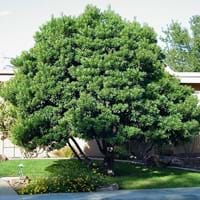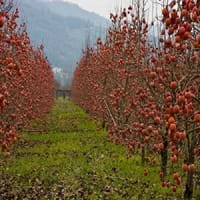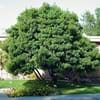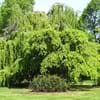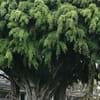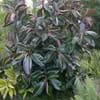Life Span
Perennial
Perennial
Origin
China, Japan
China
Types
it is a type of blueberry
Not available
Habitat
Not Applicable
secondary forest, Sunny Edge, Woodland Garden Canopy
USDA Hardiness Zone
9-11
6-10
Sunset Zone
H1, 8, 9, 14, 15, 16, 17, 18, 19, 20, 21, 22, 23, 24
H1, 6, 7, 8, 9, 12, 14, 15, 16, 18, 19, 20, 21, 22, 23, 24
Habit
Upright/Erect
Pyramidal
Flower Color
White
Light Yellow
Flower Color Modifier
Bicolor
Bicolor
Fruit Color
Dark Blue, Black
Orange
Leaf Color in Spring
Green, Dark Green, Bronze, Orange Red
Green
Leaf Color in Summer
Dark Green
Green
Leaf Color in Fall
Dark Green
Yellow, Burgundy, Orange Red
Leaf Color in Winter
Red, Dark Green
Not Available
Leaf Shape
Crescent-shaped
Pinnate
Plant Season
Spring, Summer, Fall
Summer, Fall, Winter
Sunlight
Full Sun, Partial Sun
Full Sun, Partial Sun
Type of Soil
Loam, Sand
Clay, Loam
The pH of Soil
Acidic, Neutral
Acidic, Neutral
Soil Drainage
Average
Well drained
Bloom Time
Late Spring, Early Summer
Summer
Tolerances
Not Available
Not Available
Where to Plant?
Ground
Ground
How to Plant?
Rooted stem cutting, Seedlings
Grafting, root cutting, Seedlings
Plant Maintenance
Low
Medium
Watering Requirements
Requires watering in the growing season, Water when soil is dry
Requires regular watering
In Summer
Lots of watering
Lots of watering
In Spring
Moderate
Moderate
In Winter
Ample Water
Average Water
Soil pH
Acidic, Neutral
Acidic, Neutral
Soil Type
Loam, Sand
Clay, Loam
Soil Drainage Capacity
Average
Well drained
Sun Exposure
Full Sun, Partial Sun
Full Sun, Partial Sun
Pruning
Prune in winter, Prune when young, Remove branches, Remove short twigs
Remove damaged leaves, Remove dead branches, Remove dead leaves
Fertilizers
All-Purpose Liquid Fertilizer, Fertilize in early spring, Mulch
All-Purpose Liquid Fertilizer
Pests and Diseases
Black Silt, Leaf rust, Sooty Mold
Caterpillars
Plant Tolerance
Not Available
Drought
Flowers
Showy
Insignificant
Flower Petal Number
Single
Single
Foliage Texture
Medium
Medium
Foliage Sheen
Glossy
Glossy
Self-Sowing
No
Not Available
Allergy
Not Available
Abdominal pain, Anaphylaxis, Inflammation
Aesthetic Uses
Bonsai, Showy Purposes
Not Used For Aesthetic Purpose
Beauty Benefits
For treating wrinkles, Skin Problems
Not Available
Environmental Uses
Air purification, Shadow Tree
Air purification
Medicinal Uses
Bone strength, Cancer, Diabetes, Digestion problems, Heart problems, High blood pressure, Improving mental health, Vitamin C, Weight loss
Astringent, Cancer, Diarrhea
Part of Plant Used
Fruits
Bark, Fruits, Wood
Other Uses
Edible syrup, Employed in herbal medicine, Used As Food, Used as Ornamental plant
Used as a cereal in making bread, porridge, Used As Food, Used for flavoring in Liquors, dairy products, gelatins,puddings, meats, candies, etc.
Used As Indoor Plant
No
No
Used As Outdoor Plant
Yes
Yes
Garden Design
Hedges, Screening / Wind Break, Shade Trees, Street Trees
Feature Plant, Fruit / Fruit Tree, Topiary / Bonsai / Espalier
Botanical Name
ELAEOCARPUS decipiens
Diospyros virginiana
Common Name
Japanese Blueberry
American persimmon common persimmon, sugar-plum,eastern persimmon
In Hindi
जापानी ब्लूबेरी
अमेरिकी ख़ुरमा
In German
japanische Blaubeere
amerikanische persimmon
In French
bleuet japonais
Diospyros virginiana
In Spanish
arándanos japonés
Diospyros virginiana
In Greek
ιαπωνική βατόμουρου
American λωτός
In Portuguese
blueberry japonês
Caqui americano
In Polish
Japoński borówki
Amerykański persimmon
In Latin
Vaccinium Italica
Diospyros virginiana
Phylum
Not Available
Tracheophyta
Class
Not Available
Magnoliopsida
Order
Oxalidales
Ericales
Family
Elaeocarpaceae
Ebenaceae
Genus
Elaeocarpus
Diospyros
Clade
Angiosperms, Eudicots, Rosids
Angiosperms, Asterids, Eudicots
Tribe
Not Available
Not Available
Subfamily
Not Available
Not Available
Number of Species
Not Available
Importance of Japanese Blueberry and American persimmon
Want to have the most appropriate plant for your garden? You might want to know the importance of Japanese Blueberry and American persimmon. Basically, these two plants vary in many aspects. Compare Japanese Blueberry and American persimmon as they differ in many characteristics such as their life, care, benefits, facts, etc. Every gardener must at least have the slightest clue about the plants he wants to plant in his garden. Compare their benefits, which differ in many ways like facts and uses. The medicinal use of Japanese Blueberry is Bone strength, Cancer, Diabetes, Digestion problems, Heart problems, High blood pressure, Improving mental health, Vitamin C and Weight loss whereas of American persimmon is Astringent, Cancer and Diarrhea. Japanese Blueberry has beauty benefits as follows: For treating wrinkles and Skin Problems while American persimmon has beauty benefits as follows: For treating wrinkles and Skin Problems.
Compare Facts of Japanese Blueberry vs American persimmon
How to choose the best garden plant for your garden depending upon its facts? Here garden plant comparison will help you to solve this query. Compare the facts of Japanese Blueberry vs American persimmon and know which one to choose. As garden plants have benefits and other uses, allergy is also a major drawback of plants for some people. Allergic reactions of Japanese Blueberry are Not Available whereas of American persimmon have Abdominal pain, Anaphylaxis and Inflammation respectively. Having a fruit bearing plant in your garden can be a plus point of your garden. Japanese Blueberry has showy fruits and American persimmon has showy fruits. Also Japanese Blueberry is not flowering and American persimmon is not flowering . You can compare Japanese Blueberry and American persimmon facts and facts of other plants too.
